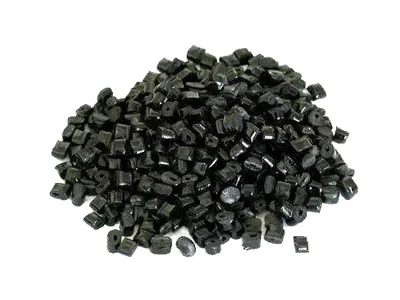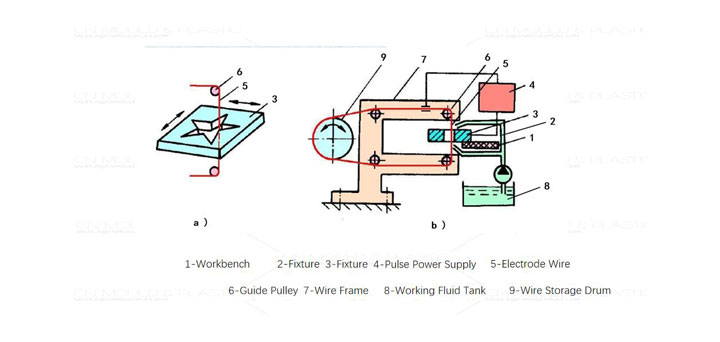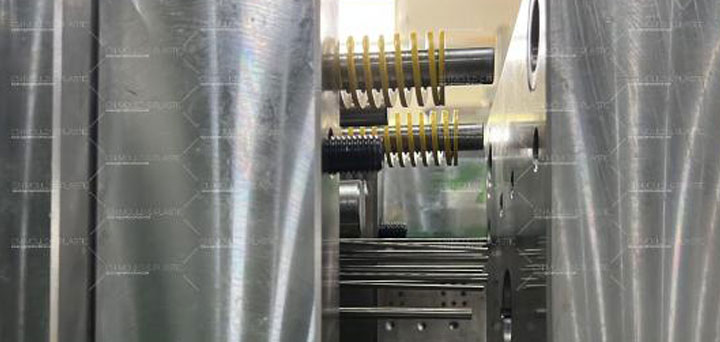07-25
The principle of wire electrical discharge machining (WEDM) is the same as that of electrical discharge machining (EDM). The difference is that in WEDM, a continuously moving metal wire (called the el...
Polyhexamethylene adipamide, commonly known as PA66, is a thermoplastic resin that is generally made from the condensation of adipic acid and hexamethylene amine.It insolubles in general solvents, only solubles in m-benzol, etc. It has the characteristics of high mechanical strength and hardness. It can be used as engineering plastics, mechanical accessories such as gears and lubricating bearings. It can also replace non-ferrous metal materials to make machine shells, automotive engine blades, etc., and can also be used to make synthetic fibers.

| PA66 | Zytel® 70G30HSLR BK099 | Vydyne® 21SPC polyamide 66 | Ultramid® A3HG6 HR bk 23591 | GRILON TSG-30/4 V0 | Unit | Testing Standard |
| Data sheet | Click to Download | |||||
| Manufacturer | Dupont | Vydyne | BASF | EMS | ||
| Description | 30% Glass Reinforced, Heat Stabilized, Hydrolysis Resistant, Polyamide 66 | Vydyne 21SPC is a general-purpose PA66 resin. Available in natural color. It is designed principally for injection-molding fabrication. This resin offers a well balanced combination of engineering properties characterized by high strength; rigidity; good toughness; high melt point; good surface lubricity; abrasion resistance; and resistance to many chemicals, machine and motor oils, solvents and gasoline. | Glass fibre reinforced injection moulding grade with good resistance to hydrolysis. I.e.: for applications in automotivecooling circuit | Grilon TSG-30/4 V0 is a heat stabilised, flameretardant, self-extinguishing engineering thermoplastic, reinforced with glass-fibre 30% (by weight) based on a semi-crystalline Polyamide-66- Polyamide-6-alloy. | ||
| Appearance | Natural color | Natural color | Natural color | Red | ||
| UL Yellow Card | E41938-234406 | E70062 | / | / | ||
| Physical | Dry | Dry | Dry | Dry | Unit | Test Method |
| Density | 1.37 | 1.14 | 1.37 | 1.44 | g/cm³ | ISO 1183 |
| Mechanical | Dry | Dry | Dry | Dry | Unit | Test Method |
| Tensile Modulus | 1450000 | 450000 | 6800(MPa) | 10500(MPa) | psi | ISO 527-2 |
| Tensile Stress(Break) | 28300 | 7980 | 120(MPa) | 150(MPa) | psi | ISO 527-2 |
| Tensile Strain(Yield) | 3 | 5 | 5.4 | 2.5 | % | ISO 527-2 |
| Impact | Dry | Dry | Dry | Dry | Unit | Test Method |
| Charpy Notched Impact Strength(23°C) | 12 | 2.4(-22°F, ft.lb/in²) | 12 | 9.5 | kJ/m² | ISO 179/1eA |
| Charpy Unnotched Impact Strength(23°C) | 75 | No Break(-22°F) | 71 | 65 | kJ/m² | ISO 179/1eU |
| Notched lzod Impact Strength(23°C) | 12 | 2.4(-22°F, ft.lb/in²) | 9 | / | kJ/m² | ISO 180/1A |
| Thermal | Dry | Dry | Dry | Dry | Unit | Test Method |
| Heat Deflection Temperature | 253 | 158(°F) | 250 | 235 | °C | ISO 75-2/A |
| Melting Temperature | 262 | 500(°F) | 260 | 260 | °C | ISO 11357-3 |
| Electrical | Dry | Dry | Dry | Dry | Unit | Test Method |
| Compared to the creepage resistance index | PLC1 | PLC0 | PLC1 | PLC1 | / | UL 746 |
| Comparative Tracking Index | 400 | 600 | 450 | 600 | / | IEC 60112 |
| Flammability | Dry | Dry | Dry | Dry | Unit | Test Method |
| Flame Rating | HB | V-2(UL94) | HB | V-0(UL94) | rating | IEC 60695-11-10,-20 |

